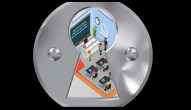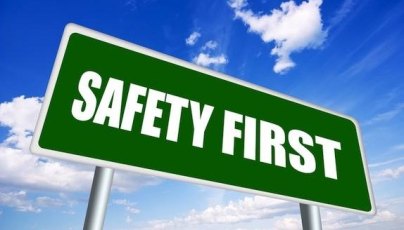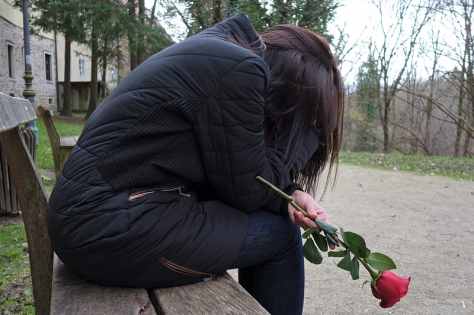.
Confessions of an ignorant and frustrated teacher
.
Trauma during development or, childhood trauma, changes the architecture of the physical brain and the ability to learn and social behavior. It impacts 2 out of 3 children at some level, but I didn’t even know what it was…
Childhood Trauma can be defined as a response of overwhelming fear or helplessness to a painful or shocking event, or to chronic, toxic stress, including ACEs (adverse childhood experiences).
ACEs include physical, emotional and sexual abuse, physical and emotional neglect, a missing parent (due to separation, divorce, incarceration, death), witnessing household substance abuse, violence, or mental illness and more.
Trauma-impacted children are not sick or “bad”, they are injured. Developmental trauma is an injury. It happens TO the child. In turn, when they become adults, many re-enact unaddressed trauma, injuring the next generation in a merciless cycle of pain and fear. When multiple injuries fester unaddressed, they set off a chain of events leading ultimately to early death, according to the CDC.
.
Deep Impact: Developmental trauma changes the architecture of a developing child’s physical brain.
.
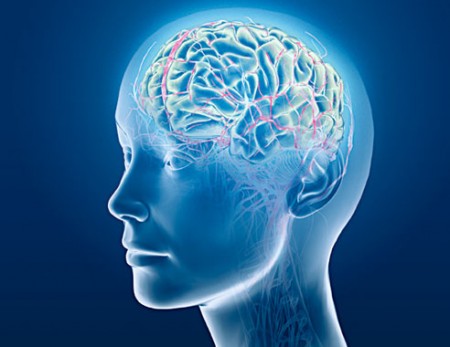
.
Part 1: The changes to the physical structure of the brain impair cognition. The specific changes to brain architecture damage children’s memory systems, their ability to think, to organize multiple priorities (“executive function”), and hence to learn, particularly literacy skills
Part 2: The changes to the child’s neurobiology predispose hypervigilance and mistrust, leading trauma-impacted children to misread social cues. Their fears and seemingly distorted perceptions generate surprisingly aggressive behaviors. Their ‘hair trigger’ defenses (or a withdrawn “dissociation”) are often set off by deep memories outside of explicit consciousness of the child.
Adults’ views, from the ‘outside’, of the seemingly illogical, or worse, oppositional behavior, are often shock, confusion, frustration and maybe anger.
If we act on our uninformed views, we risk re-triggering more of the child’s trauma, and even more aggression. I confess, as a less experienced classroom teacher, I often did exactly that.
The child’s inner pain and fear are often intentionally camouflaged and nearly impossible to perceive from the outside.
The trauma history, which connects the inside fear to the outside behavior, is often buried so deeply in the brain that even the injured child can be unconscious of the connection.
.
Some adults normalize the pain and fear of the injured child, thinking “they’ll get over it.” It’s actually the opposite. Young children have fewer coping mechanisms and their immature brains are still developing.
The impacts of trauma are actually greater on the vulnerable, still-developing brain.
.
ACE-impacted kids are more common than seasonal allergy sufferers
.
Experts including Surgeon Generals and the Attorney General have described children’s exposure to violence and trauma with specific terms ‘national crisis’, and ‘epidemic’ years ago. The CDC says impacts from childhood trauma are critical to understand.
Childhood trauma is a broad-based crisis. It impacts children of all colors, all income levels, all education levels, all social strata, across all geographies. It’s all of us.
Scientists Felitti/Anda (CDC)have found that even in beautiful, suburban San Diego about one-fourth of middle class, mostly white, college educated, working folks with medical insurance had THREE or more ACEs!
Three or more ACEs is significant because three+ ACEs correlate over a lifetime, with doubled risk of depression, severe obesity, drug abuse, lung disease, and liver disease. It triples the risk of alcoholism, STDs and teen pregnancy. There is a 5X increase in attempted suicide. The lifelong impacts are shocking and alarming.
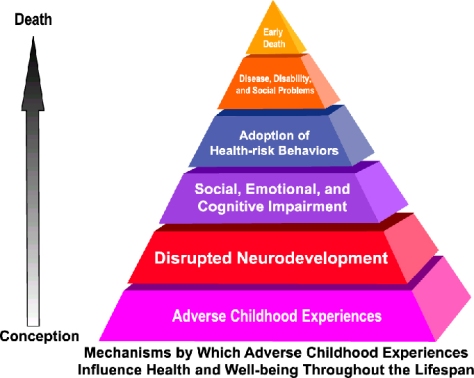
The American Academy of Pediatrics’ policy says that child abuse and neglect are significantly “associated with many leading causes of adult death”
Children did not cause their own trauma and they can not address their trauma alone. They need adult support.
Nevertheless, presently many adults ignore childhood trauma. It’s rarely spoken about.
.
Schools are not trauma-informed organizations
I am embarrassed to admit my own ignorance.
I did know about the inner pain and fear of my students more intimately than most. I began, and still begin, every school year by visiting my student’s families, sitting in their living rooms to discuss school, life and their hopes and concerns about their child. In the classroom, I quickly experience the child’s outward behaviors which can seem random, nonsensical at times, and often angry.
Yet, I still do not easily connect the angry, outward behavior in the classroom to the inner fear or pain.
As an adult, the classroom seems “safe.” There isn’t an obvious or logical connection to continuing fears, in our safe context. It seems contradictory.
What I forget is that the pain and fear are not in the environment.
The pain and fear are hidden inside the child: they bring intense fear memories and altered neurobiology with them like they bring their backpack (wherever they go).
Making the connection, intellectually, is even more difficult in the midst of my own stress from a triggered student’s emotional, intentionally distracting, sometimes screamed, personal insults or abusive attacks.
.
Even when I have been able to stay calm myself, and to connect the (seeming) anger to the (hidden) fear, that was only the beginning. I still did not understand.
There’s more.
The group context, or the social complexity in the classroom may be the most difficult aspect of all.
I learned the hard way:
when I stay calm in the midst of the triggered child’s barrage, it seems like “unfair” leniency to other children. They see only the aggressive outward behavior from a peer and they expect “punishment”.
More learning when I succeed in maintaining composure:
the other 30 children in the room are not waiting calmly or politely for me so I can focus solely on de-escalating one of their peers. It’s an uncomfortable and off-task process for other kids to endure so they also digress quickly.
Even more learning:
whether I stay calm or not, the aggression and commotion of one triggered student will often trigger a second student’s fear, maybe others too.
Keeping the academic context in mind, all above initiates from a single instance only. Several instances involving different students can happen every day, sometimes simultaneously. Meanwhile, each minute invested to de-escalate a single student is a minute lost to academic endeavors for all thirty other students.
It’s complex.
Now, imagine NOT being trauma-informed and facing 20 to 30 students, and NOT knowing that 30% to 50% are trauma-impacted…
“Success” would require becoming expert at detecting, multiple, virtually undetectable triggers, within multiple students. It is not quick or simple or instinctive.
There’s more.
That same teacher must become expert at anticipating and pre-empting all those students’ fear triggers, and all in advance of any “fight or flight” response, which can disrupt the entire class.
All day today.
All week this week.
All month this month.
More context: A teacher is not permitted to consider adjusting the scope or pace of lessons: the national “Common Core”, or the academic “State Standards” which are synchronized and connected, page-by page and lesson-by-lesson, and which lead to “standardized” testing. God forbid the teacher be off by a page.
The recurring, “standardized” tests and the resulting stresses are rightfully controversial for many reasons, by themselves. Trauma-impacts add more controversy. First, the stress of the high stakes of the tests can re-trigger past traumas during testing. Second, the tests do also occur in urban settings with higher concentrations of violence, poverty, stress and trauma, all impairing cognition under stress. Test results can then be distorted as “achievement gaps” for higher concentrations of students of color in that violent setting with inadequate (lower) supports and lower socioeconomic status.
Let’s pile on top: budget cuts for public schools each year translate to fewer Teachers/Counselors/Nurses with fewer resources to accomplish trauma-informed education, year after year.
“Teaching” in this context becomes nearly impossible at many points.
We are trying to scoop water out of a boat which has gaping trauma-holes in the bottom. Some wonder why morale is low and moral injury is high? and teachers are leaving the profession . . .
Trauma-impacted children are losing their right to equally access their education, while adults stand by, while school districts stand by, while states stand by.
That leads to the central conclusion and key action :
.
Schools must become trauma-informed organizations
.
Cognitive, or “educational”, processes are muted neurologically in triggered children: a direct conflict with schools’ missions.
If schools are going to achieve their educational mission, for all students, then schools must be aware of and accommodating of trauma-impacted students.
‘Trauma-Informed’ is a comprehensive paradigm, an on-going perspective and process, not a destination or ‘program’.
“Success” with trauma-impacted students comes slowly, over time. It is crucial to maintain a safe, predictable, calm, environment, and safe relationships, school-wide, with all adults responding calmly, hour by hour, day by day, month after month. Safety, safety, safety, at all levels, in all endeavors, in all domains. And that’s only the beginning.
Just as children can not address their own trauma alone, teachers can not create trauma-informed school organizations all alone.
Teaching trauma-impacted children is an intense role. Successful teachers on the front line require trauma-training, support, strategies and resources. Explicit training and substantive support are essential. It’s crucial that the classroom training and personal training and support for all staff, school-wide, be on-going. All these are on-going requirements, because the trauma is on-going.
A few hours about “trauma” in a “PD” session can help build awareness, but becoming competent with the depth and breadth of the issues requires much more than a PD or a weekend seminar. Those will only create frustration for teachers on the front line facing the reality of trauma every day. It’s personal for those on the front line. The on-going training and support must also be personal. “Reflective Supervision” (see also here and also here ) would be a start.
If teachers are not afforded on-going training and simultaneous on-going support, then a dangerously explosive risk is set up for all involved, beginning with frustrated, demoralized teachers in a revolving door to other careers.
Training starts with brain science, including the continuing, deep and lifelong impacts of developmental trauma. Otherwise, our attempts at “academics” will be, at best, inefficient, more likely futile. Practical basics include de-escalation in group settings and then also strategies to avoid in our school systems, so schools themselves are not re-triggering or re-traumatizing children.
Simultaneously, at the school level, we need to identify, or in some way, screen for students’ trauma histories. It’s too easy to miss camouflaged trauma, in particular those children who defend by quietly dissociating. We almost never talk about them, yet experts tell us that among younger children, compliant “dissociation” is the most common defense against trauma.
‘Trauma-informed’ includes an adequate ratio of adults to students in a classroom. One adult for thirty children is not “trauma-informed”. The data is clear: six-to-ten children (minimally) in a classroom of thirty are trauma-impacted in our city. One adult per six-to-ten trauma-impacted students is absurdly insufficient, and that still ignores the other twenty-plus children who are sharing the same space. “Trauma-informed” is simply dangerous lip service at the point of twenty(plus) children with one adult. Inadequate staffing is unethical, and is directly in conflict with ‘equal access’ to education for all the children in the same classroom.
‘Trauma-informed’ includes physical space for students’ off-line de-escalation, away from the ‘crowd’, noise, stress, and triggers — not simply ‘the corner’ of the same classroom with 30-plus other folks trying to learn. Off-line de-escalation space also requires trauma-competent adults, including on-site counselors and a nurse.
More important: ‘Trauma-Informed’ also includes explicit physical space and explicit time prescribed and expected and encouraged (and measured) for adult de-escalation, and reflective practices, off-line. Why? It is emotional work, with high risks. On-going, close, personal interaction for hours each day with trauma-impacted students generates “Secondary Traumatic Stress” (STS) leading to “Post Traumatic Stress Disorder” (PTSD) among the adults. ‘Bearing Witness’ to injured children is difficult labor. In fact, the research tells us that most successful teachers are immersed in student relationships, much deeper than a mere witness, or simple ‘contact’ and therefore, more vulnerable.
Experts characterize the danger of STS and PTSD in relationships with trauma-impacted children as a predictable occupational injury. Key direction for the safety of all is for adults to “put on their own oxygen mask on first” (and keep it on), before trying to help a child. Explicit, front line teacher-supports are absolutely critical, on-going, because childhood trauma is on-going. Supports for staff must go well beyond “self-care”, which can often be the district’s way of “blaming the victim“. Alternatively, as noted above, “Reflective Supervision” is one example of appropriate support.
Next, ‘Trauma-Informed’ radically restructures discipline away from standardized, ‘zero-tolerance’ policies. Otherwise, school systems continue filling “the school-to-prison pipeline” with injured, trauma-impacted children.
Further, we need to confront the impotence, the stress, and the damage created by the paradigm of school as a “learning factory” with synchronized timing and “standardized” testing. These are the antithesis of equity and trauma-informed.
Finally, we should be adjusting efforts against “achievement gaps” to a laser focus on investing more in communities with more violence, stress and trauma.
All the above efforts at ‘trauma-informed’ help confront the horrifying litany of lifelong implications of unaddressed trauma during childhood development.
In spite of the devastating impacts and the implications, Developmental Trauma is still “the elephant in the [class]room”!
Meanwhile, children are losing their right to equally access their education.
Silence or complicity would be wrong, morally wrong.
It’s time for change.
.
Help build awareness of developmental trauma
“Nowhere to Hide” blogposts are designed to help grow awareness of childhood trauma. Each post focuses on a single component of the workings of developmental trauma, via a real life example in short, “60 second” soundbite links, akin to “Public Service Announcements” (PSAs).
All the narratives are all about real kids (with pseudonyms). I live in community with them, and know them personally as students, neighbors and friends. These are not “combined” or imaginary narratives, or caricatures.
Most of the children in the stories lived in a single neighborhood. Each one passed through my classroom. More than half were in the same classroom, the very same year”! Difficult to imagine…
.
“Nowhere to Hide” series links
Trigger warning:
The children’s experiences in the vignettes are unvarnished. Their traumatic responses may trigger painful memories.
.
“PSA” Links for social media
.
Nowhere to Hide: Maria; Fight, flight or freeze

Nowhere to Hide: Andre’s Fear; What are Adverse Childhood Experiences?

Nowhere to Hide: Jamar’s Hyper-arousal
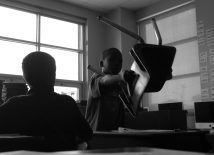
Nowhere to Hide: Roberto’s Dissociation
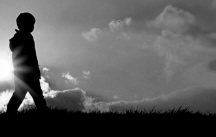
Nowhere to Hide: Danny’s Memory

Nowhere to Hide: Ashley’s “Normal” Education? Part 1

Nowhere to Hide: Ashley’s “Normal” Education? Part 2

More to come
.
“Like” us at “Trauma-Informed Schools” on Facebook
.
Please share a PSA link to help grow public awareness of the impacts of developmental trauma. There are so many of us who’ve never heard of the overpowering life-long impacts.
.
“Peek Inside a Classroom” series overview
The second original series, “Peek Inside a Classroom”, provides much more detailed looks inside my classroom, primarily focused on specific students: Jasmine, Danny and José.
Other children are captured in broader looks at education reform concepts: “Failing Schools or Failing Paradigm?” and “Effective Education Reform”, co-authored with Sandra L. Bloom, M. D..
.
“Peek Inside a Classroom” series links
.
Peek Inside a Classroom: Jasmine

Peek Inside a Classroom: Danny


Peek Inside a Classroom: Failing Schools or Failing Paradigm?
Peek Inside a Classroom: Effective Education Reform (with Sandra Bloom, M.D.)
.
Developmental trauma, still “the elephant in the [class] room” for many adults.
.
“Like” us at “Trauma-Informed Schools” on Facebook
.
* * * * * * * * * * * * * * * * * * * * * * * * * * * * * * * * * * * **** * * * * * * * * * * *
Nowhere to Hide: Elephant in the Classroom
As edited at Living in Dialogue.
.






![* * * NOWHERE TO HIDE * * * “The Elephant in the [Class]Room”](https://lucidwitness.com/wp-content/uploads/2016/08/frustrateacher.jpg?w=672&h=372&crop=1)


